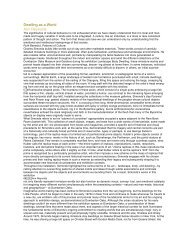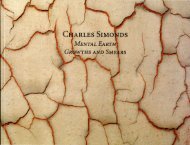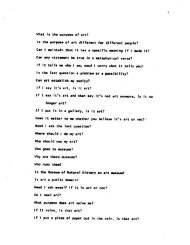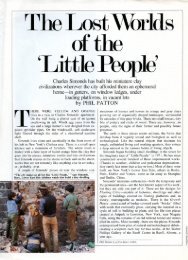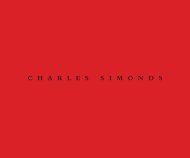Read Catalog - Charles Simonds
Read Catalog - Charles Simonds
Read Catalog - Charles Simonds
Create successful ePaper yourself
Turn your PDF publications into a flip-book with our unique Google optimized e-Paper software.
<strong>Charles</strong> Sim.onds's Engendered Places:<br />
Towards a Biology of Architecture<br />
By John Hallmark Neff<br />
<strong>Charles</strong> <strong>Simonds</strong> has been exploring his imaginary civilization of Little People<br />
for over ten years-first privately in his studio, then publicly in street pieces,<br />
and now increasingly in works which combine aspects of both, in installations<br />
or cycles of portable works intended to be seen by people who visit<br />
museums. At the same time <strong>Simonds</strong> continues to make his temporary Dwellings<br />
out in the community, while pursuing opportunities for developing his<br />
art in new directions through permanent installations in public buildings and<br />
private homes. He directs his energies (in a way both obsessive and remarkably<br />
unassuming) to working out the most promising of limitless possibilities<br />
open to his tiny, imagined culture. Every aspect of his work seems to be<br />
another means by which to understand the Little People's ways.<br />
The films in which <strong>Simonds</strong> has collaborated, for example, make his essentially<br />
private rites available to more people than could have attended them<br />
in person and also serve "as the records of rituals belonging to the underlying<br />
mythology of the Little People." 1 Miniature dwellings and the full scale<br />
projects they inspired (such as Niagara Gorge, pl. 24, and Growth House, pl.<br />
28) make it possible for us to share <strong>Simonds</strong>'s involvement and concern with<br />
the facts of habitation, how people live and "how this affects the structures in<br />
which they live: with the way people's beliefs are reflected in what they<br />
build." 2 In the process we may wonder whether it is we or the constructions<br />
that have changed in size, but for <strong>Simonds</strong> they are all one and the same: there<br />
is, he says, only one scale in his mind, "the scale of my vision." 3 He projects<br />
himself into each of his works regardless of actual physical dimensions,<br />
whether literally to re-enact the Little People's. rituals as in the full-scale<br />
works, or to invest them with his imagination. Each detail is a living place in<br />
which he has been, spent time, and come to know well. 4 And in the process<br />
the very notions of "public" or "private" have become so blurred as to beg<br />
Figure r. Pieter Bruegel the Elder (Flemish, c. I 52 5 I 30- I 5 69 J.<br />
Tower of Babel. Panel; 6o x 74·5 em (23 ¥ax 29Yl6 in.)<br />
Museum Boymans-van Beuningen, Rotterdam (inv. no. 2443).<br />
I2





